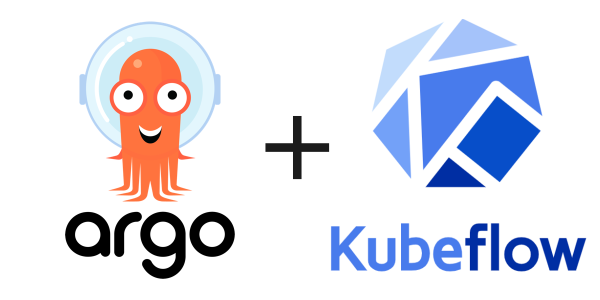
写在前面
如果您不熟悉Argo,建议您以纯YAML格式查看示例. 该语言是描述性的,Argo 示例提供了详尽的解释.
对于经验丰富的受众,此DSL授予您使用Python编程定义Argo工作流的能力,然后将其转换为Argo YAML规范.
DSL使用在Argo Python客户端存储库中定义的Argo模型. 结合这两种方法,我们得到了对Argo Workflows的整个底层控制.
1
2
3
4
| # 首先安装python-argo客户端
pip install argo-workflows
# 再安装argo-workflow-dsl
pip install argo-workflow-dsl
|
argo-client-python
与Kubernetes client很类似,这里不做过多分析,参考github即可。argo-client-python
argo-python-dsl
argo-python-dsl 将argo主要的几种template模式实现在argo.workflows.dsl下的template.py中,通过引用template,添加相应的模板装饰器即可,函数对象式实现argo adsl。
下面是几种argo-python-dsl与argo adsl的对比
容器模板
1
2
3
4
5
6
7
8
9
10
11
12
13
14
15
16
17
18
19
20
| from argo.workflows.dsl import Workflow
from argo.workflows.dsl import template
from argo.workflows.dsl.templates import V1Container
class HelloWorld(Workflow):
entrypoint = "whalesay"
@template
def whalesay(self) -> V1Container:
container = V1Container(
image="docker/whalesay:latest",
name="whalesay",
command=["cowsay"],
args=["hello world"]
)
return container
|
转换为adsl如下
1
2
3
4
5
6
7
8
9
10
11
12
13
14
15
| # @file: hello-world.yaml
apiVersion: argoproj.io/v1alpha1
kind: Workflow
metadata:
name: hello-world
generateName: hello-world-
spec:
entrypoint: whalesay
templates:
- name: whalesay
container:
name: whalesay
image: docker/whalesay:latest
command: [cowsay]
args: ["hello world"]
|
DAG模板
1
2
3
4
5
6
7
8
9
10
11
12
13
14
15
16
17
18
19
20
21
22
23
24
25
26
27
28
29
30
31
32
33
34
35
36
37
38
39
40
41
| from argo.workflows.dsl import Workflow
from argo.workflows.dsl.tasks import *
from argo.workflows.dsl.templates import *
class DagDiamond(Workflow):
@task
@parameter(name="message", value="A")
def A(self, message: V1alpha1Parameter) -> V1alpha1Template:
return self.echo(message=message)
@task
@parameter(name="message", value="B")
@dependencies(["A"])
def B(self, message: V1alpha1Parameter) -> V1alpha1Template:
return self.echo(message=message)
@task
@parameter(name="message", value="C")
@dependencies(["A"])
def C(self, message: V1alpha1Parameter) -> V1alpha1Template:
return self.echo(message=message)
@task
@parameter(name="message", value="D")
@dependencies(["B", "C"])
def D(self, message: V1alpha1Parameter) -> V1alpha1Template:
return self.echo(message=message)
@template
@inputs.parameter(name="message")
def echo(self, message: V1alpha1Parameter) -> V1Container:
container = V1Container(
image="alpine:3.7",
name="echo",
command=["echo", ""],
)
return container
|
转换为adsl如下
1
2
3
4
5
6
7
8
9
10
11
12
13
14
15
16
17
18
19
20
21
22
23
24
25
26
27
28
29
30
31
32
33
34
35
36
37
38
39
40
41
42
43
44
45
46
47
48
| # @file: dag-diamond.yaml
# The following workflow executes a diamond workflow
#
# A
# / \
# B C
# \ /
# D
apiVersion: argoproj.io/v1alpha1
kind: Workflow
metadata:
name: dag-diamond
generateName: dag-diamond-
spec:
entrypoint: main
templates:
- name: main
dag:
tasks:
- name: A
template: echo
arguments:
parameters: [{name: message, value: A}]
- name: B
dependencies: [A]
template: echo
arguments:
parameters: [{name: message, value: B}]
- name: C
dependencies: [A]
template: echo
arguments:
parameters: [{name: message, value: C}]
- name: D
dependencies: [B, C]
template: echo
arguments:
parameters: [{name: message, value: D}]
# @task: [A, B, C, D]
- name: echo
inputs:
parameters:
- name: message
container:
name: echo
image: alpine:3.7
command: [echo, ""]
|
传递参数模板
1
2
3
4
5
6
7
8
9
10
11
12
13
14
15
16
17
18
19
20
21
22
23
24
25
26
27
28
29
30
31
32
33
34
35
36
37
38
39
40
41
42
43
| from argo.workflows.dsl import Workflow
from argo.workflows.dsl.tasks import *
from argo.workflows.dsl.templates import *
class ArtifactPassing(Workflow):
@task
def generate_artifact(self) -> V1alpha1Template:
return self.whalesay()
@task
@artifact(
name="message",
_from=""
)
def consume_artifact(self, message: V1alpha1Artifact) -> V1alpha1Template:
return self.print_message(message=message)
@template
@outputs.artifact(name="hello-art", path="/tmp/hello_world.txt")
def whalesay(self) -> V1Container:
container = V1Container(
name="whalesay",
image="docker/whalesay:latest",
command=["sh", "-c"],
args=["cowsay hello world | tee /tmp/hello_world.txt"]
)
return container
@template
@inputs.artifact(name="message", path="/tmp/message")
def print_message(self, message: V1alpha1Artifact) -> V1Container:
container = V1Container(
name="print-message",
image="alpine:latest",
command=["sh", "-c"],
args=["cat", "/tmp/message"],
)
return container
|
转换为adsl如下
1
2
3
4
5
6
7
8
9
10
11
12
13
14
15
16
17
18
19
20
21
22
23
24
25
26
27
28
29
30
31
32
33
34
35
36
37
38
39
40
41
42
43
44
45
46
47
48
| # @file: artifacts.yaml
apiVersion: argoproj.io/v1alpha1
kind: Workflow
metadata:
name: artifact-passing
generateName: artifact-passing-
spec:
entrypoint: main
templates:
- name: main
dag:
tasks:
- name: generate-artifact
template: whalesay
- name: consume-artifact
template: print-message
arguments:
artifacts:
# bind message to the hello-art artifact
# generated by the generate-artifact step
- name: message
from: ""
- name: whalesay
container:
name: "whalesay"
image: docker/whalesay:latest
command: [sh, -c]
args: ["cowsay hello world | tee /tmp/hello_world.txt"]
outputs:
artifacts:
# generate hello-art artifact from /tmp/hello_world.txt
# artifacts can be directories as well as files
- name: hello-art
path: /tmp/hello_world.txt
- name: print-message
inputs:
artifacts:
# unpack the message input artifact
# and put it at /tmp/message
- name: message
path: /tmp/message
container:
name: "print-message"
image: alpine:latest
command: [sh, -c]
args: ["cat", "/tmp/message"]
|
脚本模板
最有趣的部分,在argo adsl中支持脚本的形式是在yaml文件中source关键字处以文本形式编写代码,argo-python-dsl提供@closure和@scope两种装饰器,提供两种不同的对script风格的支持,后者更加符合pythonic
1
2
3
4
5
6
7
8
9
10
11
12
13
14
15
16
17
18
19
20
21
22
23
| # @template形式,以字符串形式赋值给source
import textwrap
class ScriptsPython(Workflow):
...
@template
def gen_random_int(self) -> V1alpha1ScriptTemplate:
source = textwrap.dedent("""\
import random
i = random.randint(1, 100)
print(i)
""")
template = V1alpha1ScriptTemplate(
image="python:alpine3.6",
name="gen-random-int",
command=["python"],
source=source
)
return template
|
1
2
3
4
5
6
7
8
9
10
11
12
13
| # @closure形式,符合我们的风格
class ScriptsPython(Workflow):
...
@closure(
image="python:alpine3.6"
)
def gen_random_int() -> V1alpha1ScriptTemplate:
import random
i = random.randint(1, 100)
print(i)
|
1
2
3
4
5
6
7
8
9
10
11
12
13
14
15
16
17
18
19
20
21
| # 使用@scope可更进一步包装,支持避免单个函数过于复杂,可以将部分逻辑拆分至@scope中
...
@closure(
scope="main",
image="python:alpine3.6"
)
def gen_random_int(main) -> V1alpha1ScriptTemplate:
import random
main.init_logging()
i = random.randint(1, 100)
print(i)
@scope(name="main")
def init_logging(level="DEBUG"):
import logging
logging_level = getattr(logging, level, "INFO")
logging.getLogger("__main__").setLevel(logging_level)
|
